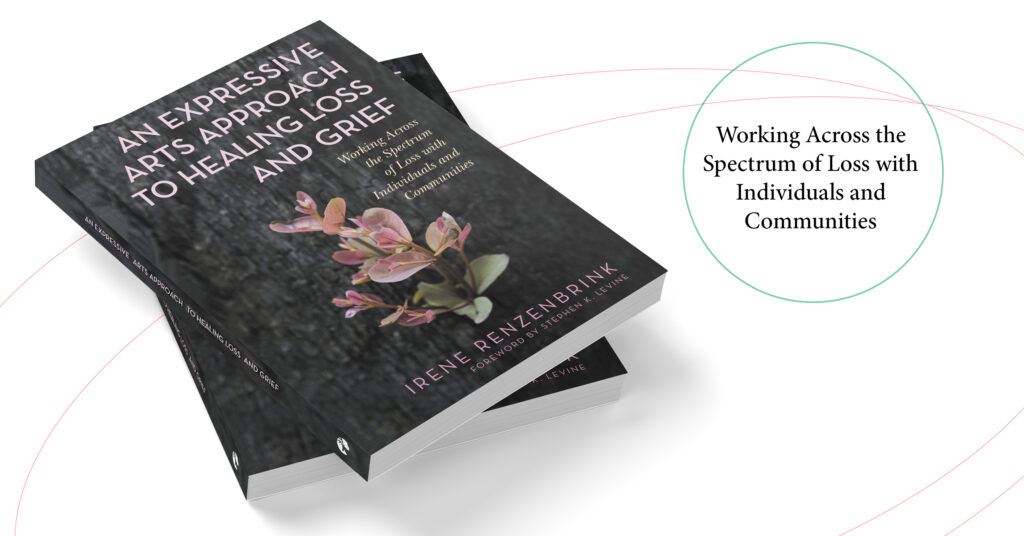
Drawing on expertise in both expressive arts and grief counselling, this new book from Irene Renzenbrink highlights the use of expressive arts therapeutic methods in confronting and healing grief and bereavement. We caught up with Irene to ask her some more about her experience in expressive arts therapy and the process of writing the book.
What inspired you to write this book?
After a long social work career specialising in grief counselling and bereavement support, I decided to study art therapy and discovered a way of working with loss and grief that was more imaginative and nourishing. Art was my best subject at school and I studied and practised Dutch and Australian folk art painting for many years as a hobby. My art therapy studies led to a PhD in expressive arts therapy, an integrated method which uses all of the arts. I was encouraged by colleagues at the European Graduate School to approach JKP about publishing a book based on my doctoral dissertation entitled: So Many Little Dyings – Illuminating Loss and Grief through the Arts.
What interests you most about Expressive Arts Therapy?
Expressive Arts Therapy (EXA) offers a wide range of opportunities for imaginative exploration and transformation of personal and societal troubles. Using a variety of creative methods EXA goes beyond words to discover creative and artistic abilities that promote healing and well-being. Noted Swiss psychiatrist and psychologist, Carl Jung once said that ‘the hands will often solve a mystery that the intellect has struggled with in vain.’
What would be your top tool for a grief specialist to better support their clients?
The main requirement for a grief specialist is to learn to be comfortable with expressions of painful emotion which may trigger their own pool of unacknowledged grief or fear of future losses. Wounded healers are people who have done their own grief work and do not avoid or minimize others’ pain.
You have established a new connection between expressive arts therapy and grief counselling, for people who haven’t read your book yet, would you be able to explain the importance of this connection?
It is vitally important that art therapists, dance therapists, music therapists and other creative arts therapists who work with grieving and bereaved people have a sound knowledge of grief theory and the very latest developments in grief counselling practice. Conversely, grief counsellors often lack confidence in using an arts-based approach in their work and by discovering imaginative ways of helping clients with their grief, they also help themselves to avoid burn out and compassion fatigue.
Could you share an experience from your career so far that wasn’t included in the book?
One of the other hats I’ve worn in my life is as a wardrobe assistant in show business. My husband used to have a company that provided labour for large concerts in Canada. I was once asked to repair a Valentino gown for Katy Perry. It was an exquisite concoction of pink silk organza, tulle and a bodice made up of sequins in the form of a butterfly. My job was to reinforce the stitches that held dozens of pastel coloured silk organza butterflies that ‘danced’ around the skirt. It was breathtakingly beautiful. In expressive arts therapy we are often moved by an artwork and this is known as an aesthetic response. I was moved to tears by the beauty and craftmanship of the dress as well as being rather intimidated by the responsibility of repairing it! It also shows us that art can be found everywhere.
What have you enjoyed most about writing ‘An Expressive Arts Approach to Healing Loss and Grief’?
The wonderful thing about the periods of Covid lockdown in Melbourne during 2020 was the peace and quiet and slowing down of life and that gave me an amazing opportunity for uninterrupted writing. It was wonderful to have my husband’s loving support during that time. He was an endless source of cups of tea and encouragement. Sadly, he died unexpectedly shortly after I submitted the manuscript and I have dedicated the book to him and added an Afterword about my own journey through grief.
An Expressive Arts Approach to Healing Loss and Grief is out now.